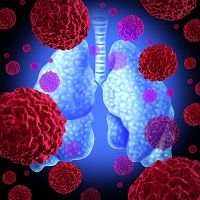Current Legionnaires' Disease Outbreak: What You Need to Know
A confirmed outbreak of Legionnaires' Disease, or Legionellosis, has been declared in New York City and health officials have provided updates and need-to-know information regarding the illness.

A confirmed outbreak of Legionnaires’ Disease, or Legionellosis, has been declared in New York City and health officials have provided updates and need-to-know information regarding the illness.
Legionnaires’ Disease, a type of pneumonia caused by the bacterium Legionella, is not transferred from person to person but rather infection occurs by breathing in water vapor infected with the bacteria. The New York City Department of Health and Mental Hygiene issued a statement about the outbreak that began on July 10 in the South Bronx, NYC. Eight people have died from this recent outbreak.
“We are concerned about this unusual increase in Legionnaires’ disease cases in the South Bronx,” Health Commissioner Mary Bassett, MD, MPH, said in the news release. “We are conducting a swift investigation to determine the source of the outbreak and prevent future cases.”
Legionella grows in warm water such as faucets, showers, or cooling towers. Health officials tested 17 cooling towers for the bacteria and five tested positive. They are confident that at least one of them is the source of the outbreak. The cooling towers have been disinfected and there is no longer a risk in those areas.
“I urge anyone with symptoms to seek medical attention right away,” Bassett advised.
The Centers for Disease Control and Prevention (CDC) identified 10 things that healthcare workers need to know about Legionnaires’ Disease:
1. Diagnosing
- Clinical features: pneumonia, cough, fever
- Incubation period: two to 14 days after exposure
- Outcome: hospitalization common, fatal in 5 to 30% of cases
2. Who to Test
- Patients with severe pneumonia
- Patients who have failed antibiotic therapy
- Patients suspected of healthcare-associated pneumonia
- Patients who have traveled within two weeks before illness onset
- Patients with immunocompromised host with pneumonia
3. How to Test
- Culture
- Urine antigen
- Paired serology
- Direct fluorescent antibody stain
- PCR
4. Respiratory Specimen for Diagnosis
- Urine antigen testing may be convenient, however, isolating respiratory secretions (such as lung tissue, pleural fluid, or a normally sterile site) is important for investigation.
- Both clinical and environmental isolates are necessary.
5. Preferred Treatment
- Guidelines for when a patient is diagnosed with Legionnaires’ Disease
6. Ask Patients About Travel
- More than 20% of cases are linked to recent travel
- Difficult to detect in travelers because of < 5% attack rate
- Reporting travel-associated cases allows for earlier control of the illness
7. Frequency of Disease
- Cases are under-reported and diagnostic testing is under-used
- About 8,000 to 18,000 patients are hospitalized in the US each year for the disease
- Travel-associated, community-based, healthcare, and occupational outbreaks are common
8. Sources of Legionella
- Drinking water systems, whirlpool spas, and cooling towers (if these three conditions are present): transmission-heat, stasis, and aerosolization
- Found in natural, freshwater environments — but do not cause the disease due to insufficient amounts
9. Risk Factors
- Older than 50 years of age
- Diabetes
- Smoking
- Immune system disorders
- Systemic malignancy
- Renal or hepatic failure
- Exposure to whirlpool spas
- Recent travel — overnight outside of the home
- Recent repairs or maintenance on domestic plumbing
10. How to Report Diagnosis
- Find state health department and submit case report form

